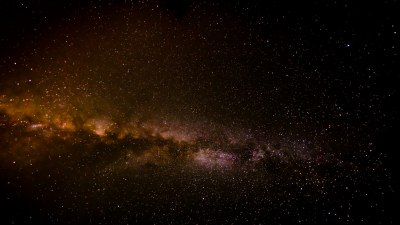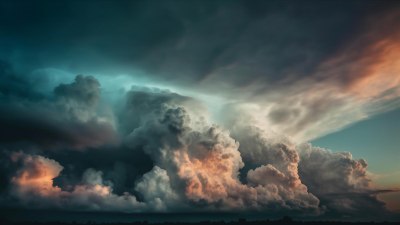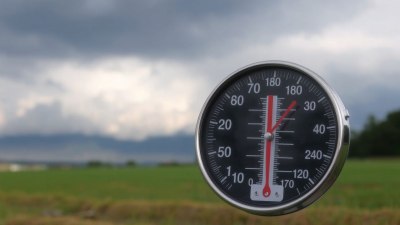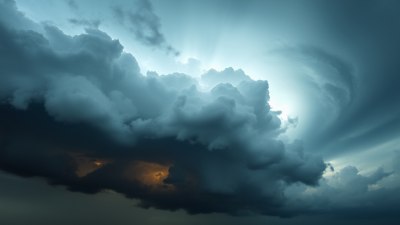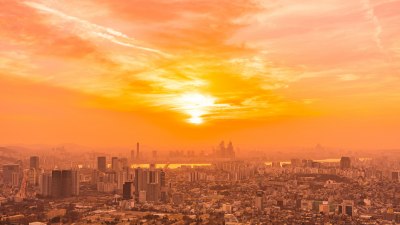What Causes Red Sunsets and Orange Storm Clouds
Explore the science behind red sunsets and orange storm clouds, understanding how light and atmosphere create these vivid sky colors.
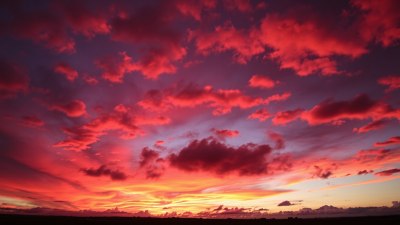
The magnificent hues of red sunsets and glowing orange storm clouds have fascinated humans for centuries. These brilliant colors not only paint the sky with breathtaking beauty but also reflect complex atmospheric processes. Understanding what causes these vivid displays requires delving into the behavior of sunlight, air particles, and weather phenomena.
The Nature of Sunlight and Color
Sunlight, though seemingly white, is composed of a spectrum of colors, each with its own wavelength. When sunlight passes through the Earth's atmosphere, it interacts with air molecules, water droplets, and various particles. This interaction leads to the scattering of light, which is key to the colors we perceive in the sky.
Shorter wavelengths, such as blue and violet, scatter more easily due to their smaller size, while longer wavelengths, like red and orange, are less likely to scatter. This quality of light and atmosphere is fundamental in creating different sky colors throughout the day.
Rayleigh Scattering: Why the Sky is Blue
Rayleigh scattering is the scattering of light by particles much smaller than the wavelength of light. Air molecules in the atmosphere scatter shorter wavelengths (blue and violet) more than longer wavelengths. Even though violet light scatters more, the human eye is more sensitive to blue, and some violet is absorbed by the upper atmosphere. As a result, the sky appears blue during midday when the sun is high.
Sunset Colors: The Role of the Sun’s Position
At sunset, the sun is near the horizon, so sunlight must pass through a much thicker layer of the atmosphere compared to when the sun is overhead. The thicker atmosphere scatters away the shorter blue and green wavelengths, leaving the longer wavelengths like red, orange, and yellow to dominate the sky's color palette. This phenomenon causes the sun and the surrounding sky to glow with warm, rich hues.
Moreover, the exact shades seen during sunset can vary due to atmospheric conditions such as humidity, pollution, and the presence of aerosols. For example, volcanic eruptions or dust storms can enhance the scattering effect, producing even more vivid colors.
Mie Scattering and Atmospheric Particles
Unlike Rayleigh scattering, which involves very small particles, Mie scattering occurs with larger particles like dust, pollen, smoke, and water droplets. Mie scattering does not favor any particular wavelength as strongly, and it tends to scatter light in a way that preserves the whiteness or brightness of the light but can also contribute to richer orange and red colors when the sun is low.
This is why after a rainstorm or during hazy conditions caused by pollution, sunsets can appear more intense or have a different coloration than usual.
How Storm Clouds Become Orange
Storm clouds often develop deep grays and blues under normal daylight due to their thickness and water content. However, when the sun is low at dawn or dusk, sunlight may pass through the atmosphere at an angle that favors the red and orange wavelengths. If storm clouds are illuminated by this light, especially their undersides or edges where the light penetrates, they can appear to glow with vibrant oranges and reds.
This occurs because the thick clouds block direct sunlight, but the scattered long wavelengths from the horizon light illuminate them from below or the side, creating a dramatic contrast and coloring effect. This is commonly observed in towering cumulonimbus clouds during thunderstorm developments at sunset.
The Effect of Pollution and Aerosols
Human activities contribute to atmospheric particles like soot, dust, and other aerosols that can influence sunset colors. These particles increase scattering and can intensify reds and oranges, making sunsets appear more vivid or sometimes hazy.
Urban pollution can enhance the scattering of long wavelengths, brightening sunset colors, but can also reduce air quality. Conversely, remote or cleaner areas might have less intensely colored sunsets due to fewer particles to scatter the light.
Volcanic Eruptions and Enhanced Color Displays
Volcanic eruptions can inject massive amounts of ash and aerosols high into the atmosphere, which can linger for months or years. These particles scatter sunlight unusually, often amplifying reds and oranges during sunrises and sunsets worldwide. Historical accounts and photographs show spectacularly colored skies for extended periods after major eruptions.
Seasonal and Geographic Influences
The intensity and frequency of red sunsets and orange storm clouds can vary with location and seasons. Near equatorial regions, the sun’s angle changes less throughout the year, typically producing consistent sunset colors. Higher latitudes experience longer twilight and varied sun angles, which can create more dramatic and prolonged sunset hues.
Additionally, seasons affect atmospheric conditions such as humidity, temperature, and air particle concentrations, all influencing sky colors at sunset.
The Psychology and Cultural Significance of Red Sunsets
Red sunsets have long held cultural, artistic, and even spiritual significance. Many cultures have interpreted red in the sky as an omen, a symbol of change, or simply a beautiful spectacle to be celebrated. Artists and poets often capture sunset colors to evoke emotions, moods, or symbolize endings and transitions.
Scientifically, the vibrant colors can also signal weather changes. For example, a red sky at night often indicates good weather ahead due to high-pressure systems, while a red sky in the morning might warn of incoming storms.
Observing and Photographing Red Sunsets and Orange Storm Clouds
Capturing the perfect sunset or storm cloud color requires understanding natural light conditions. Photographers often seek out days following rain when the air is clear of dust and pollution. Using the right camera settings and filters can enhance the rich reds and oranges, although natural light does most of the work.
Timing is crucial; the window for vibrant colors near sunset is often brief, lasting minutes. Watching storm clouds at dusk can also produce dramatic images, especially when combined with silhouettes of landscapes or cityscapes.
Summary of Key Factors Affecting Red and Orange Sky Colors
- Sun’s angle: Lower angles cause longer atmospheric path and scattering of blue light.
- Rayleigh scattering: Strongly scatters shorter blue wavelengths.
- Mie scattering: Caused by larger particles, affects overall light diffusion.
- Atmospheric particles: Dust, pollution, and aerosols intensify color by increasing scattering.
- Weather conditions: Humidity and cloud types affect the colors and their distribution.
- Geography and season: Variants in sun position and atmospheric makeup influence colors.
The interplay between sunlight, atmospheric particles, and weather creates the dazzling colors of red sunsets and orange storm clouds. This natural artistry not only provides visual delight but also offers insight into the Earth's atmospheric conditions and dynamics.
Next time you witness a fiery red sunset or glowing orange clouds during a storm, consider the intricate dance of light and air particles responsible for this spectacular sky show.
